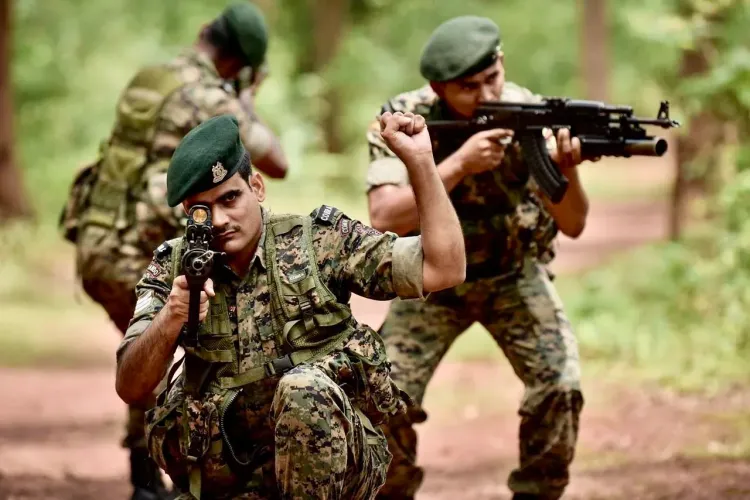Why Did Security Forces Dismantle Maoist Memorials?

Synopsis
Key Takeaways
- Security forces in Dantewada dismantled three Maoist memorials.
- The operation was aimed at countering insurgent propaganda.
- Engagement with local communities is crucial for restoring trust.
- Coordination between CRPF and local police was key to the operation's success.
- Authorities are focused on maintaining security and presence in remote areas.
Raipur, July 27 (NationPress) In a significant preemptive maneuver prior to the 'Naxalite Martyr Week', security forces in Chhattisgarh's Dantewada district have dismantled three Maoist memorials during a coordinated operation designed to counteract insurgent propaganda and bolster morale, police officials reported.
Under the unified command of senior leaders from the Bastar and Dantewada police ranges alongside the Central Reserve Police Force (CRPF), the operation commenced in the early hours of July 26 as part of a more extensive area domination and search strategy.
The tactical sweep through the villages of Malewahi, Puspal, and Kahchenar resulted in the identification and destruction of three memorial structures dedicated to fallen Maoist figures: CCM Anand, also known as Sudarshan Kartam, Deputy Commander Ramsu Korram, Jaiman, and Sanita.
Of the memorials, two were constructed from wood and one from cement and stone. Armed with axes and crowbars, security personnel demolished these installations, which are frequently utilized by the CPI (Maoist) to strengthen local influence and honor their casualties during the annual observance of Martyr's Week from July 28 to August 3, the officials stated.
The operation was spearheaded by Commandant Rajiv Kumar of CRPF’s 195th Battalion and Inspector Naresh Salam, guided by senior IPS officers including IG Sundarraj P., DIG Kamalochan Kashyap, DIG Rakesh Chaudhary, SP Gaurav Rai, ASP Udit Pushkar, and ASP Ramkumar Barman. This coordinated effort is part of a larger initiative to eradicate Naxal influence and diminish Maoist visibility and psychological impact in sensitive areas of Dantewada.
Additionally, security forces engaged with villagers in Kahchenar, where residents expressed their support for law enforcement and called for enhanced development. This interaction highlighted a crucial strategic shift; in conjunction with tactical operations, the state is focusing on building civilian trust and facilitating development.
Having safely returned to their base, the forces remain vigilant as the banned Maoist organization readies for its annual commemorative activities.
Through intensified patrolling, structural demolitions, and comprehensive intelligence-gathering, authorities aim to thwart subversive actions and reinforce administrative presence in remote and vulnerable regions.







